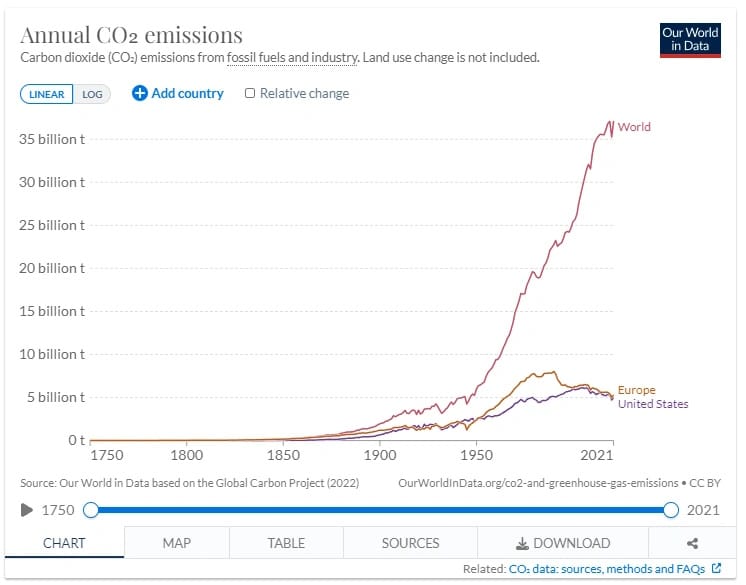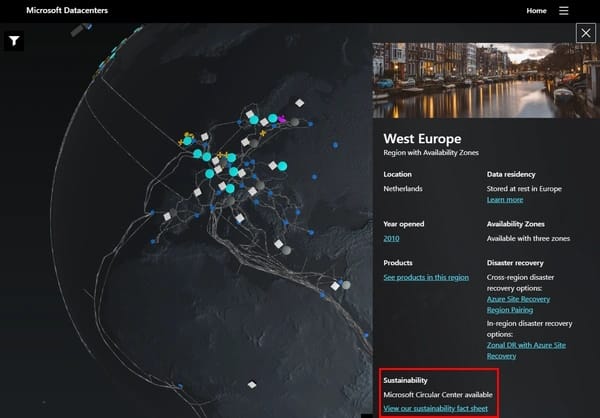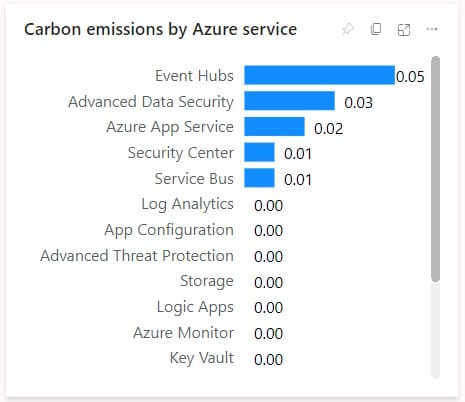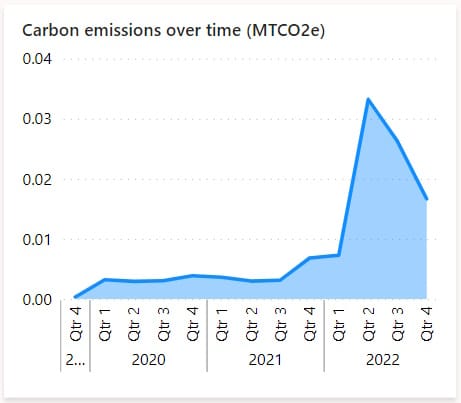Calculate your carbon emissions from Azure service usage
I gathered this blog post information about Azure Cloud sustainability and how you can estimate the carbon emissions associated with your Azure services usage.
About carbon dioxide CO2 emissions in general
Carbon dioxide (CO2) is a greenhouse gas that heavily influences global warming and climate change. Burning fossil fuels and deforestation, have significantly increased the amount of CO2 in the atmosphere. This has been leading to rising temperatures, changing weather patterns, and other negative impacts on the environment.
The success of the Industrial Revolution in the late 18th century was heavily dependent on the usage of fossil fuels such as coal and oil. Basically, Carbon dioxide (CO2) emissions have been increasing since the Industrial Revolution.
Carbon dioxide (CO2) emissions are still increasing at the global level so there is still a lot of work to do. Most countries and different organizations & corporations and individuals are already committed to decreasing these carbon emissions.
The European Parliament has adopted the European Climate Law, which raises the EU’s 2030 emissions reduction target to at least 55% from 40% and makes climate neutrality by 2050 legally binding (Reducing carbon emissions: EU targets and measures, 2023)

Source: CO2 emissions - Our World in Data
Azure Sustainability

Microsoft has declared that Azure has committed to focus on four key areas of environmental impact on local communities—carbon, water, waste, and ecosystems (Azure Sustainability).
- 100% renewable energy by 2025
- Water positive by 2030 replenish more water than we consume by 2030.
- Zero-waste certification by 2030.
- Net-zero deforestation from new construction.
How to find more sustainability information at the Azure Region level?
Microsoft has created a Azure global infrastructure experience tool that visualizes locations of Data centers around the globe and provides interesting sustainability information. This tool also visualizes Microsoft's participation in sustainability projects such as building wind or solar capabilities.
Each Azure Region has its own sustainability fact sheet which presents interesting and useful information about Microsoft's local commitments in the area in those key areas (mentioned above). You can find the sustainability fact sheet in the right panel when you have clicked on specific Region.

How to estimate the carbon emissions associated with your Azure services usage?
Currently, there are at least two solutions available to estimate the carbon emissions associated with your Azure services usage.
Emissions Impact Dashboard for Azure
Emissions Impact Dashboard for Azure is a Power BI App that calculates your carbon emissions from Azure cloud usage. The dashboard provides multiple views of carbon emission data such as emissions by Azure Service and emissions over time. The app has also an interesting view that explains thoroughly what kind of calculation methodologies are used to present the data.
You can find more information about this app here. This Power BI App is free and you can download it from here.


Cloud for Sustainability API
Emissions Impact Dashboard for Azure is a ready and robust reporting tool for cloud carbon emission data. Cloud for Sustainability API provides API-level access to carbon emission data related to your Azure and also Microsoft 365 usage. Especially, if you need to create a custom reporting or use the emission data e.g. to control your processes then Cloud for Sustainability API is your choice.
Currently, Cloud for Sustainability API is in public review and you need to request access to it from here.
You can find more information about the API from these links:
Microsoft Cloud for Sustainability REST API reference
Cloud for Sustainability API (Preview) OData query examples
Green software development
The purpose of green software development is to develop software so that carbon emission reduction is considered in the architecture and processes. If you're interested in green software development, I suggest you follow The Green Software Foundation. The Green Software Foundation is a non-profit organization with the mission to create a trusted ecosystem of people, standards, tooling, and best practices for green software.
Carbon-Aware SDK
The Green Software Foundation has developed Carbon Aware SDK which helps you build the carbon aware software solutions with the intelligence to use the greenest energy sources. This enables you can run your software when the electricity is clean and do less when the electricity is dirty or runs in a location where the energy is cleaner (Carbon-Aware SDK)

Comments